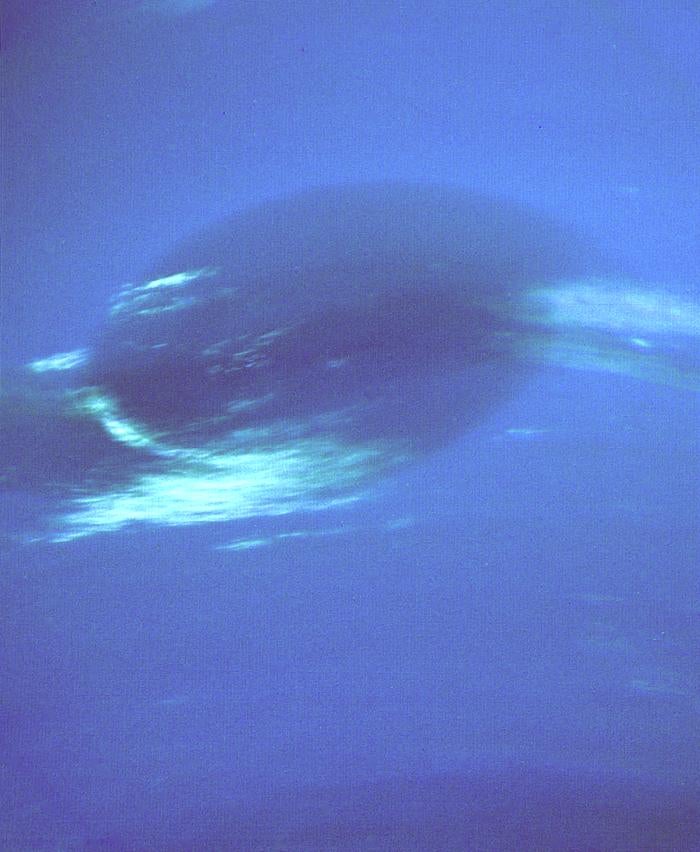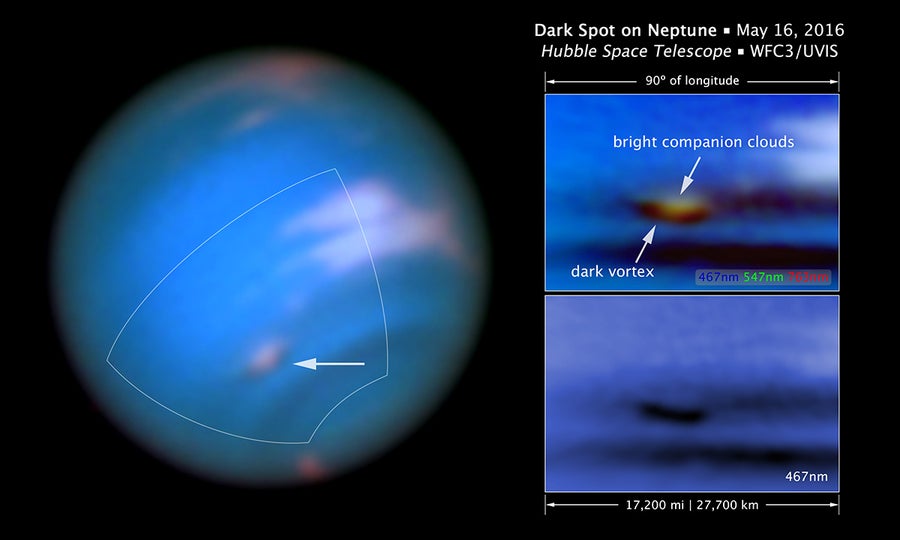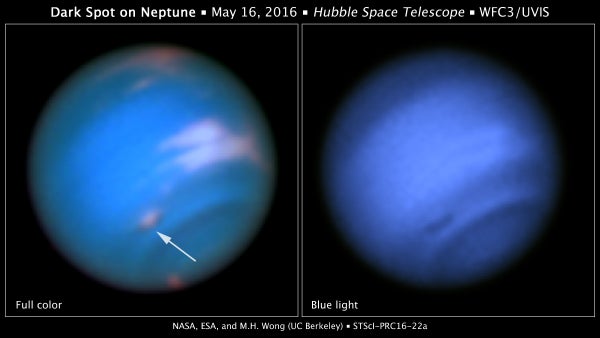This article was published in Scientific American’s former blog network and reflects the views of the author, not necessarily those of Scientific American
The ice-giant Neptune remains a somewhat enigmatic world - perched at the edge of our classical solar system, but at what is merely the start of the great outer plains of the Kuiper-belt.
In 1989 the Voyager 2 spacecraft flew by and captured what are still our best images of this 17 Earth-mass planet, showing a deep blue globe with subtle streaks and a 'Great Dark Spot'. That spot, an atmospheric vortex of high pressure, appeared to involve the highest wind speeds of any planet in the solar system, hitting an astonishing 2,100 kilometers per hour (1,300 miles per hour).

Voyager 2's image of the 1989 Great Dark Spot on Neptune - smallest features are about 50 km across (Credit: NASA/JPL)
On supporting science journalism
If you're enjoying this article, consider supporting our award-winning journalism by subscribing. By purchasing a subscription you are helping to ensure the future of impactful stories about the discoveries and ideas shaping our world today.
For Neptune to be this dynamic is somewhat counterintuitive. At the outer edge of the atmosphere the temperature is a frigid 55 Kelvin (-218 Celsius), while the deep high-pressure core of the planet reaches a relatively modest 5,400 Kelvin. Neptune is, by our standards, a very cold place.
Later data, taken by the Hubble Space Telescope in the mid 1990's, confirmed similar features to those spotted by Voyager. Now, in 2016, Hubble has taken a fresh look and found another dark spot.
As with the earlier data, this spot is also paired with bright clouds. What appears to be happening is that the dark spot is a high pressure system, a 'mountain' of atmosphere. Surrounding streams of material - mostly hydrogen and helium, but also small amounts of compounds like methane - can be lofted over the top of the high pressure system and into much colder layers where reflective ices can form.

As reported by the investigative team, the icy clouds are a lot like the phenomenon of orographic clouds that we see here on Earth - pancake-like formations that happen over terrestrial mountains.
This latest Hubble data helps confirm that bright Neptunian clouds are paired with dark vortices. Ground-based telescopes have been able to spot these bright features, but lack the resolution to probe the dark spots at bluer wavelengths. Now it seems that the evolution of these features can be traced with future Earth-based data.
Because the dark spots, or vortices, of Neptune come and go much more rapidly than a feature like Jupiter's Great Red Spot (that's been seen for the past 400 years), this is an opportunity to learn much more about Neptune's chilly secrets.
